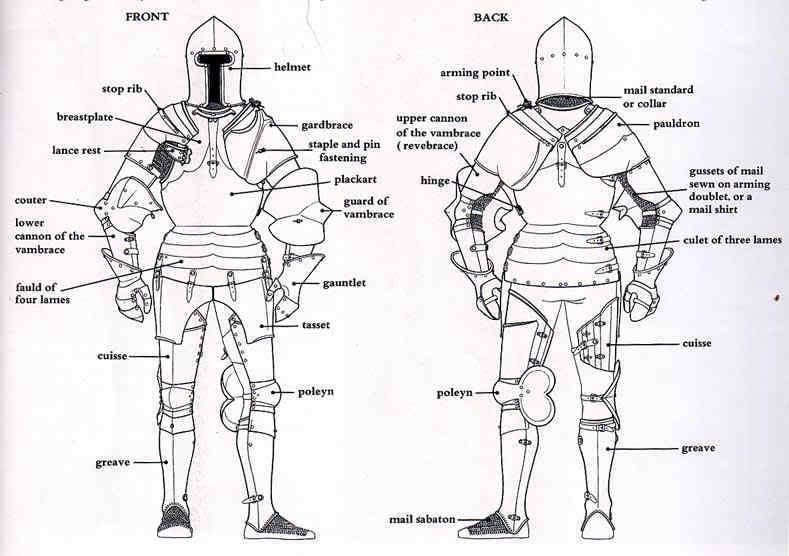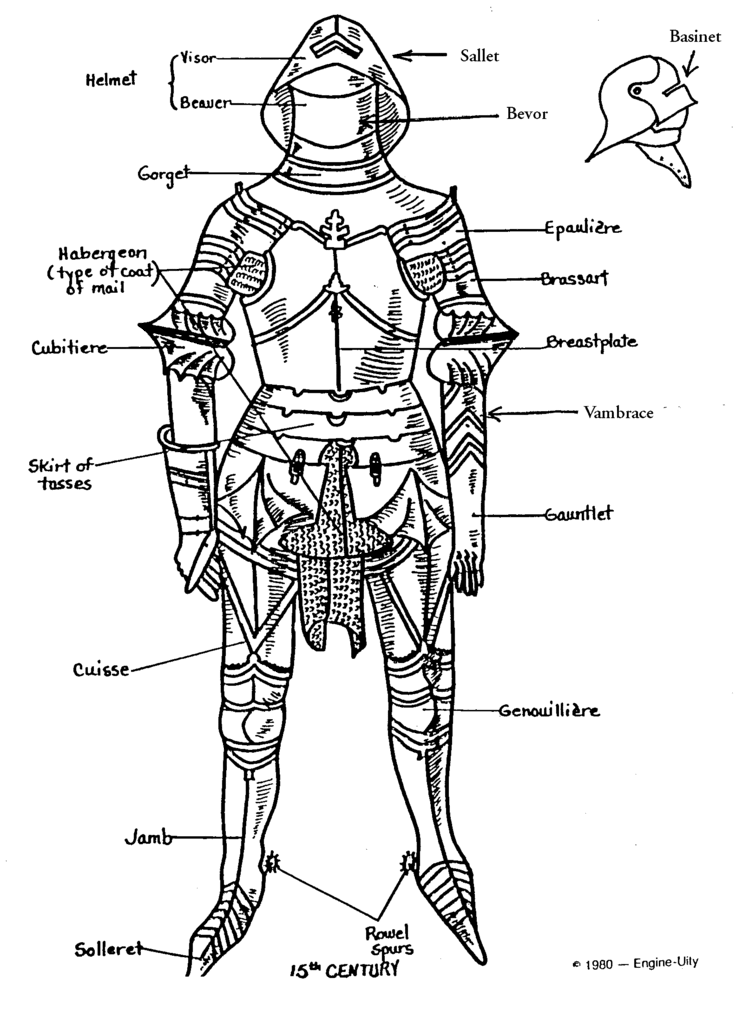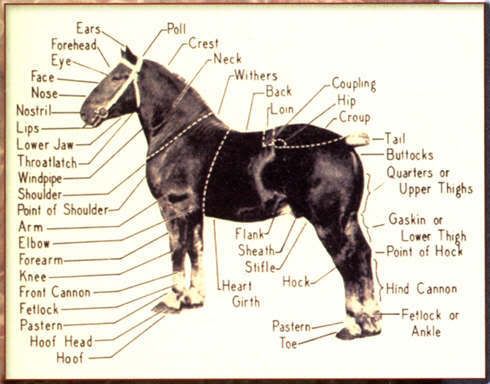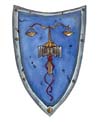Updated 2 June 2014. Links verified 27 June 2012.
Web sites:
http://www.arador.com/main/index.html
(A well-researched resource for armor from the Middle Ages.)
http://www.chronique.com/
(A site affiliated with books I personally recommend highly, The Chivalry Bookshelf. Down on 27 June, 2012! Probably not coming back.)
--> http://www.chronique.com/Library/Glossa ... ssindx.htm
(A glossary of particular utility that is found on that site. Down on 27 June, 2012! Probably not coming back.)
--> http://revival.us/chroniquebackissues.aspx
(Back issues of the out-of-print "Chronique" magazine are sold here. Many are out of print entirely.)
http://www.fordham.edu/Halsall/sbook1k.asp
(See particularly the section on "Crusades" and "Crusader Orders".)
http://www.heraldsnet.org/saitou/parker/Jpglossa.htm
(All manner of heraldic terms and blazons explained.)
http://heraldry.sca.org/primer/
(Society for Creative Anachronism's heraldry "how-to")
http://www.the-orb.net/index.html
(Particularly this: http://www.the-orb.net/encyclop/religio ... _rule.html)
(See also this: http://www.the-orb.net/encyclop/religio ... ights.html)
http://www.candlekeep.com/library/artic ... hthood.htm
(Unofficial knightly orders in FR.)
http://www.candlekeep.com/library/articles/prc.htm
(A listing of prestige classes [to include many orders] with their canon source cited.)
http://www.armor.com/ or http://www.albion-swords.com/
(Excellent modern reproductions [using traditional methods] as a reference.)
http://www.thearma.org/essays.htm
(Awesome collection of essays from the Association of Renaissance Martial Arts [this the group that employs Western Martial Arts [WMA] and historical research instead of just play-fighting and dressing up].)
http://www.oakeshott.org/
(Ewart Oakeshott was the giant of research into WMA and swords.)
http://www.metmuseum.org/Works_of_Art/c ... ID=4&dd1=4
(An example of the results of a search for "Armor" in the "Works of Art" category. This museum has one of the best public collections of arms and armor on display in the United States.)
http://ejmas.com/jwma/jwmaframe.htm
(Awesome scholarly journal about WMA.)
http://labyrinth.georgetown.edu/
(Medieval studies search engine maintained by Georgetown University in Washington, DC, USA.)
http://www.aemma.org/misc/medievalTournament.htm
(How-to hold a tournament. Academy of European Medieval Martial Arts.)
http://www.deremilitari.org/
(De Re Militari: The Society for Medieval Military History)
http://www.fleurdelis.com/meanings.htm
(Fleur-de-Lis Designs. A merchant site with some creative blazon interpretations. Thanks to Kerrick for this one.)
http://www.medievalists.net/
(An okay site. Dig around to find something worthwhile; a lot of very shallow history here.)
http://www.medart.pitt.edu/_medart/menu ... /INDEX.HTM
(A fantastic site displaying and defining medieval architecture terminology.)
Real books that I recommend (this is not an endorsement of any sellers, just a reference):
Book of Knighthood and Chivalry: With the Anonymous Ordene De Chevalerie (Paperback) by Ramon Lull
http://www.amazon.com/Book-Knighthood-C ... 436&sr=1-1
Jousts and Tournaments: Charny and the Rules for Chivalric Sport in Fourteenth-Century France (Hardcover) by Geoffroi De Charny (Author), Steven Muhlberger (Author)
http://www.amazon.com/Jousts-Tournament ... pd_sim_b_5
The Royal Book of Horsemanship, Jousting & Knightly Combat: Dom Duarte's 1438 Livro da Ensinana de Bem Cavalgar Toda Sela (Hardcover) by Dom Duarte (Author), Steven Muhlberger (Editor), Antonio Frano Preto (Translator)
http://www.amazon.com/Royal-Horsemanshi ... pd_sim_b_1
A Knight's Own Book of Chivalry (The Middle Ages Series) (Paperback)
by Geoffroi de Charny (Author), Richard W. Kaeuper (Introduction), Elspeth Kennedy (Translator)
http://www.amazon.com/Knights-Book-Chiv ... pd_sim_b_4
The Service of Ladies: An Autobiography (First Person Singular) (Paperback)
by Ulrich von Liechtenstein (Author), Kelly DeVries (Introduction), J. W. Thomas (Translator)
http://www.amazon.com/Service-Ladies-Au ... 633&sr=1-1
A Knight and His Weapons (Paperback)
by Ewart Oakeshott (Author) or any other title from this series
http://www.amazon.com/Knight-His-Weapon ... 683&sr=1-3
William Marshal: The Flower of Chivalry (Paperback)
by Georges Duby (Author)
http://www.amazon.com/William-Marshal-C ... 047&sr=8-2
Dragon Magazine #299 "Fight with Honor!, Knights & Paladins, Jousting Rules"
http://www.nobleknight.com/ProductDetai ... _GenreID_E_
Empires Trilogy, The Crusade by James Lowder (Forgotten Realms book on how things DID NOT happen EVER in medieval warfare.)
http://www.nobleknight.com/ProductDetai ... _GenreID_E_
Swords from the West (Paperback)
by Harold Lamb (Author)
http://www.amazon.com/Swords-West-Harol ... 460&sr=8-1
The Deed of Paksenarrion (Paperback) (Recommended to me by Mask himself. Fantastic fantasy book about a young woman's transformation into a paladin.)
by Elizabeth Moon (author)
http://www.amazon.com/The-Deed-Paksenar ... ksenarrion
Ivanhoe
by Sir Walter Scott (author)
Recommend a free download from iBooks
Movies that I recommend (a mix of accuracy and inspiration):
The War Lord (1965) - Heston, Boone
http://www.imdb.com/title/tt0059896/
Excalibur (1981) - Terry, MirrenEngaging story with a high (relative) degree of historical accuracy.
http://www.imdb.com/title/tt0082348/
Henry V (1989) - Branagh, JacobiA classic. Terrible adherence to history, but entertaining none-the-less.
http://www.imdb.com/title/tt0097499/
El Cid (1961) - Heston, LorenA classic, but also has value in showing the oft unreported side of being a knight - war.
http://www.imdb.com/title/tt0054847/
A Knight's Tale (2001) - Ledger, SewellA classic.
http://www.imdb.com/title/tt0183790/
Kingdom of Heaven (2005) - Bloom, NeesonThis movie is entertaining and funny, but obviously not intended as historical gospel. If anything, it does provide a decent picture of a tournament though.
http://www.imdb.com/title/tt0320661/
Ironclad (2011) - Purefoy, Giamatti, JacobiThis movie's scenery is as beautiful as its historical revision is revolting. Ridley Scott continues to try to paint the Crusades as an act of European imperialism and aggression and gets away with it because most people do not know any better. Enjoy the movie and then read this article.
http://www.imdb.com/title/tt1233301/
Similar to The War Lord in many ways, this movie shows a Templar leading the defense of a besieged castle. It is interesting to see Purefoy's portrayal of the Templar trying to keep his vows. I believe that this would useful for a player of a paladin as it demonstrates the restraint necessary in many cases, and the consequences of laxity.












